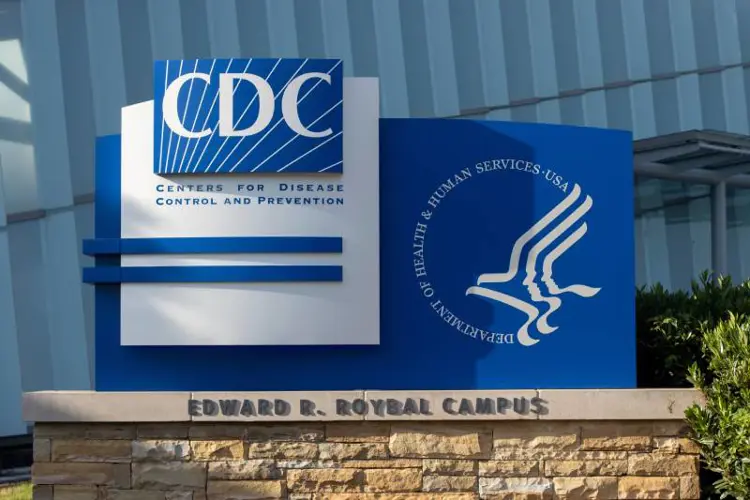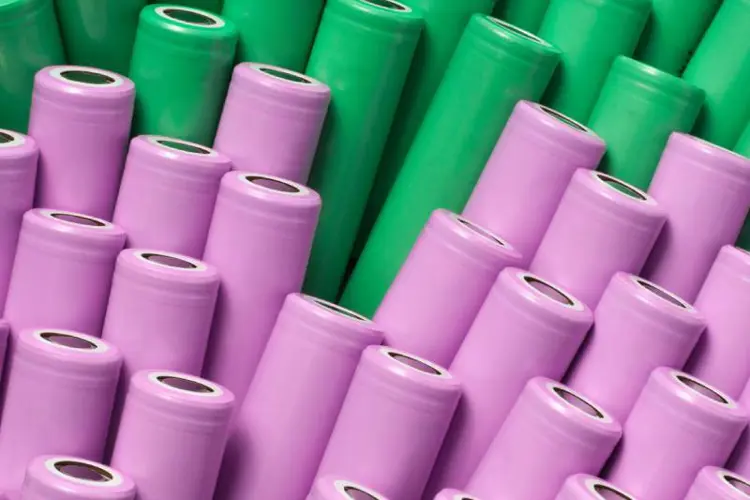The issue of teen vaping is being used by vape opponents as a wedge to discourage public acceptance of e-cigarettes as an adult product.
The reason for that is pretty simple: vaping is much safer than smoking and any adult who switches will improve their health. Vaping helps smokers; that much is basically undeniable. So if you understand that, how can you argue that vaping is a bad thing?
Skeptics say the problem is teen vaping. If non-smoking teens are starting to vape in substantial numbers, then the benefits to smokers are offset — at least a bit — by potential downsides to youth. This is a real issue to many people, and a fair concern — but only if it’s backed up by the data.
But what do we get? “Big Vaping is selling candy-flavored poison to lure teens into a lifetime of nicotine addiction!” they say, citing some scary-looking statistics from the National Youth Tobacco Survey (NYTS) and showing pictures of sweet-flavored e-liquids as if they’re smoking guns. “Vaping is a gateway to smoking!” they cry, citing studies that can’t distinguish between a gateway and the much more sensible common liability explanation.
What the debate needs, more than anything, is a reasonable look at the actual evidence. Are non-smoking teens becoming regular vapers? Should we be worried about it?
A new paper from Konstantinos Farsalinos, Riccardo Polosa and Venera Tomaselli looks at data from the 2015 NYTS to answer these questions and more. Why 2015? That was the high point of the supposed teen vaping “epidemic” in the U.S.
Making sense of the data
The paper sets out to use the data from the 2015 National Youth Tobacco Survey in the way it should have been used. While the original Centers for Disease Control and Prevention (CDC) reporting of the results focused on the number of students vaping in the past month, they never discussed how often the students vaped. A never-smoker trying a single puff on an e-cig is massively different from one vaping every day. Every day use is potentially an issue; a single puff is probably just curiosity and barely worth mentioning.
The paper also breaks the data down between never-smokers, people who’ve smoked in the past but not in the last month, and current smokers. This is another crucial point when it comes to working out what the NYTS data actually shows. Are never-smokers who vape just experimenting, while current smokers are vaping more regularly? This type of question is much more informative than the standard American public health approach of lumping them all together to produce a scary number.
The reality is that teens are mostly occasional experimenters, rather than regular users at risk for addiction.
When the NYTS data is reported by the CDC, the focus is always firmly on the number of students vaping at all in the past 30 days. Those vaping on one day in the past month are lumped together with those vaping every single day, even though the original survey question offers more detailed information. The new paper uses this data to classify the past month vapers and smokers. Vaping or smoking on between 1 and 19 of the past 30 days is defined as infrequent use, and more than that is called frequent use.
The results show that most students don’t vape or smoke, with about 77 percent never smoking and around 72 percent never vaping. Out of the students who had ever smoked (even one puff in their lives), around 28 percent had smoked in the past 30 days, and 1.7 percent were frequent smokers.
For the students who had ever tried vaping (even just one puff), just over 39 percent had vaped in the past 30 days, but half of these had only vaped on one or two days. As with cigarettes, only 1.7 percent were frequent vapers, and just 1.1 percent vaped every day.
These are just the basic results but already they clearly show why reporting any use in the past 30 days doesn’t capture the reality of the situation. Only 12.6 percent of students had vaped at least once in the past month. When the results were reported by the CDC, they said these 12.6 percent are “current vapers,” which implies frequent use. But as the paper shows, frequent use was only really reported by 1.7 percent of teens. The reality is that teens are mostly occasional experimenters, rather than regular users at risk for addiction.
Why do teens vape?
But none of this really gets to the heart of the issue. The important question is which teens are vaping frequently. If it’s predominantly teens who smoke, vaping is almost certainly having a positive effect for high school and middle school students. If lots of teens who’ve never smoked are picking up vaping, then it could be the case that vaping is genuinely causing a problem. The CDC’s official communications tend to paint it this way on the basis of past-month vaping or even less recent experimentation, but what does the data really say?
The paper looks at the rates of vaping according to smoking status, and the findings are fairly predictable. Only 5.5 percent of teens who’d never smoked had vaped in the past 30 days, and of those, 58 percent only vaped on one or two days in the month. Overall, just 0.3 percent of never-smoking teens were frequent vapers – that’s just three in a thousand.
For those who’d smoked before but not recently, around 28 percent had vaped in the past month. Out of these, almost 44 percent had only vaped on one or two days, and just 11.4 percent vaped frequently over the month. For the students who’d smoked in the past month, 58 percent had also vaped, and about 28 percent of these were frequent vapers and 19 percent vaped daily.
Frequent smokers were more likely than infrequent smokers to have vaped in the past month, and both were more likely than non-smokers.
When the researchers looked at the link between how often the teens smoked and how often they vaped, they found that more frequent smokers were more likely to be frequent vapers. For example, while 7.3 percent of infrequent smokers vaped every day, 17 percent of frequent smokers did. Similarly, over 83 percent of students who vaped frequently over the past month had smoked before, and only 14 percent of them were never smokers. For experimental vaping on just one or two days in the past month, almost 41 percent were never smokers, with around 36 percent having smoked before but not recently, and the remainder being past-month smokers.
The study paints a clear picture which is neatly summed up by the analyses the authors performed on the data. Students who’d smoked before were more than eight times more likely to vape than never-smokers, and recent smokers were more than 11 times more likely to have recently vaped than students who hadn’t smoked in the past month. Frequent smokers were more likely than infrequent smokers to have vaped in the past month, and both were more likely than non-smokers.
The story is simple: regular, frequent vaping is much more common among regular, frequent smokers, and students who smoke less are much more likely to only vape experimentally.
Is teen vaping a real problem?
The big question this paper helps to address is whether teen vaping is really anything to worry about, and the answer based on the evidence is “no.” As for why, the authors conclusion really sums it up:
“Although there is reasonable concern about the recent increase in ever and past 30-day e-cigarette use among US youth, the data reported here show that the majority of e-cigarette use is experimental or infrequent while regular use is minimal among never-smokers.”
The increase in vaping in teens is to be expected, because vapes are still quite new, there are loads of delicious flavors, and they’re much safer than smoking. But the authors stress that much of this use is infrequent and occasional.
Vaping is a public health ally, whether public health chooses to accept it or not.
The CDC decisions to define “current use” as any vaping in the past month, and to completely ignore frequency of use, has contributed to much confusion around the topic. Vaping is often painted as an epidemic of addiction and compulsive behavior, but the evidence shows that it’s mainly an epidemic of experimentation — apart from in the group it will actually benefit: regular smokers.
There are some genuine issues to address – for example, a small percentage of never-smokers can still translate to a big number of teens, because most have never smoked – but the only way to find out if that is a real problem is through regular monitoring of the detailed evidence. As this paper shows, the situation looks very different when you examine it in detail, rather than relying on broad, misleading brush-strokes like CDC reports often do.
The uncomfortable truth for the CDC is that if most regular vapers are smokers and ex-smokers – and they are – the rise of e-cigarettes can be a good thing for teens in the same way it is for adults. Vaping is a public health ally, whether public health chooses to accept it or not.
The Freemax REXA PRO and REXA SMART are highly advanced pod vapes, offering seemingly endless features, beautiful touchscreens, and new DUOMAX pods.
The OXVA XLIM Pro 2 DNA is powered by a custom-made Evolv DNA chipset, offering a Replay function and dry hit protection. Read our review to find out more.
The SKE Bar is a 2 mL replaceable pod vape with a 500 mAh battery, a 1.2-ohm mesh coil, and 35 flavors to choose from in 2% nicotine.
Because of declining cigarette sales, state governments in the U.S. and countries around the world are looking to vapor products as a new source of tax revenue.
The legal age to buy e-cigarettes and other vaping products varies around the world. The United States recently changed the legal minimum sales age to 21.
A list of vaping product flavor bans and online sales bans in the United States, and sales and possession bans in other countries.


















